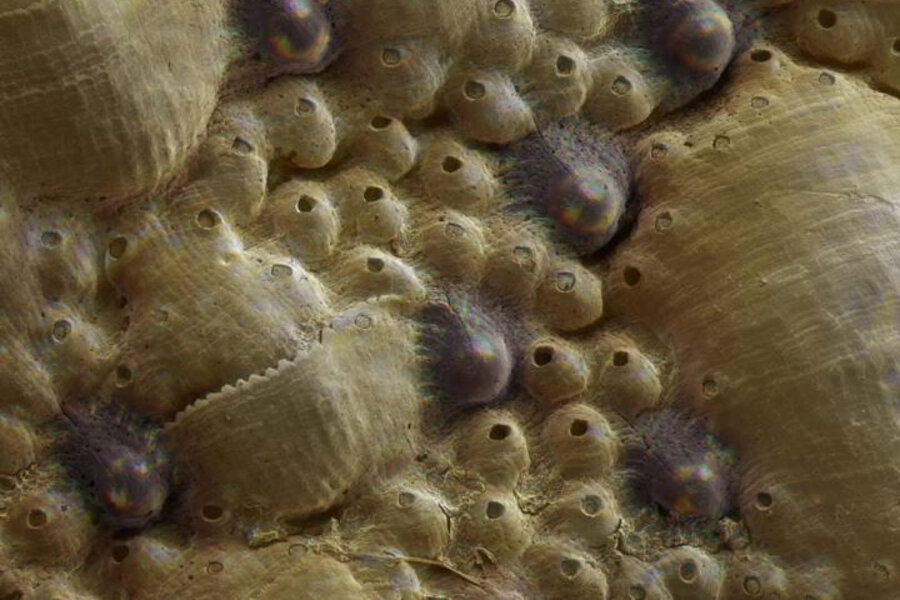100 eyes and counting: What this weird mollusk can teach materials scientists
Loading...
A tiny marine creature built with hundreds of eyes hidden in it's armored shell could become the inspiration for futuristic building materials.
Chitons, a type of sea mollusk, are related to slugs, octopuses, and mussels. Their tough shells are composed of overlapping plates that can defend against lurking predators. But what looks like minuscule dots covering the shell are actually hundreds of eyes made of the same armor-like material, a crystalline mineral known as aragonite. Scientists have known about chiton's armored eyes for decades but have only recently begun to understand the extent of their capability.
A group of scientists from Harvard University and the Massachusetts Institute of Technology in Cambridge discovered that each microscopic eye has it's own complex structure, including photoreceptive cells that can sense approaching predators. The researchers now know chitons can see an eight-inch-long fish from six and a half feet away, according to Live Science. The fact that these aragonite structures are able to both defend and provide vision, intrigues scientists interested in creating multifunctional building materials.
“To date, artificial materials that have the ability to perform multiple and often structurally opposite functions are not available. We can not yet rationally design them but studying different multifunctional biomaterials present in nature should ultimately allow us to deduct the key principles for this relatively new area of materials science,” said Joanna Aizenberg, Harvard professor of materials science, in a press release.
Researchers have long looked to mollusks and their sturdy shells for inspiration when it comes to constructing innovative, artificial, building materials. As Live Science reported:
The goal, [Ling] Li told Live Science, is to use nature's designs for improvements in engineering and technology. Windowpane oysters, for example, might inspire stronger windshields for combat vehicles. And chiton shells could provide a basis for creating self-monitoring materials, such as walls embedded with sensors that would detect cracks, Li said.
But, as The Atlantic reported, the dual role of these eyes do come with limitations:
They may help the animal to see threats, but they also compromise its defenses. Each eye consists of a large pear-shaped chamber beneath the lens, and these cavities, full of soft sensory tissues, create weaknesses in the chiton armour. The same aligned grains that help the lenses to collect more light also make them uniquely fragile. Li and [Matthew] Connors found that they collapse under forces that barely dent the rest of the plates.
Researchers seemed pleasantly surprised by this primitive creature’s complexity and capability: Sonke Johnsen, who was one of the scientist’s graduate advisers, told The Atlantic, “They're forming decent images in an animal that, to be really blunt, is not that smart.”







